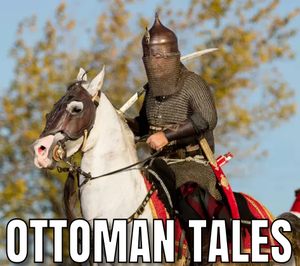Direct Translation via Google Translate. Edited.
by Artemy Sharapov
[REGNUM] The military standoff between Iran and Israel has been going on for five days now. Both sides are actively using aircraft, drones and missiles, and both military and civilian facilities are being hit.

The battle is accompanied by a "fog of war": an unprecedented number of fakes and censorship of information coming from the field. But despite this, the chronology and "plot" of the fighting is quite clear.
"LEV" WAS GREETED WITH "PROMISE"
On the night of June 12-13, the Israel Defense Forces (IDF) launched a military operation that is referred to in Israeli documents as "The People Like a Lion" and in English-language sources as "Rising Lion." Both names refer to a verse from the Old Testament Book of Numbers, which in the Synodal translation sounds like this: "Behold, the people arise like a lioness, and rise like a lion; they will not lie down until they have eaten the prey and drunk the blood of the slain."
On the afternoon of June 13, in response to a series of Israeli air force attacks on Iranian territory, the Islamic Republic of Iran announced the launch of Operation True Promise 3. It involved ballistic missiles and UAVs.
The slogan "True Promise" is a reference to modern Iranian political mythology. The founder and leader of the pro-Iranian Lebanese group Hezbollah, Sheikh Hassan Nasrallah, promised to release Hezbollah fighter, Druze Samir Kuntar. He was captured by the Israelis back in 1979 and convicted as a terrorist. In 2008, the promise was fulfilled: Israel released Kuntar, who had served a quarter of a century, and four other Arabs in exchange for the bodies of two Israeli soldiers.
The “third number” of the current Iranian operation is explained more simply: in April and October 2024, the Iranian army and the IRGC (Islamic Revolutionary Guard Corps), with the support of proxy forces - Hezbollah and the Yemeni Houthis - already carried out two “True Promise” operations.
Both involved missiles and drones, and both were responses to Israeli actions. The first was in response to a missile attack on the Iranian consulate in Damascus, which Tehran blamed on the “Zionist state.” The second, “True Promise,” was Iran’s response to the assassinations of Hassan Nasrallah and Hamas leader Ismail Haniyeh. Israel was clearly behind these actions.
In all three cases, including the current one, Israel is the attacker, Iran is the defender. The political, including international political aspects of the Iran-Israel war have already been considered earlier. From a strategic and tactical point of view, what is happening looks like this.
WHAT WERE ISRAEL'S PRIMARY GOALS?
As Israeli Prime Minister Benjamin Netanyahu stated, the goal of the operation was to destroy facilities related to the Iranian nuclear program.
The first wave of the attack hit four key targets: the Fordow nuclear enrichment plant in Qom province, the uranium enrichment center and nuclear research institute in Isfahan province, and the nuclear complex in Arak (Central Ostan province of Iran).
In addition, during the first wave of attacks, Israel targeted military bases, headquarters and IRGC headquarters. A number of high-ranking Iranian officers were also killed.
HOW THE BLITZ ATTACK BECAME POSSIBLE
The possibility of starting not just another exchange of missile salvos, but a full-scale Israeli campaign against Iran was not seriously considered.
The countries do not border each other, moreover, they are separated by more than a thousand kilometers and the territories of Iraq and Syria. Until recently, Syria remained a key ally of Iran, so Tehran believed that the country's western borders were reliably covered. However, in December 2024, Bashar al-Assad's regime collapsed, and power was taken by people from the Hayat Tahrir al-Sham* group, who quickly established good relations with the United States, the European Union and, according to rumors, Israel.
On the night of June 12-13, a large group of Israeli aircraft flew through Syrian airspace and then crossed into Iraqi Kurdistan, a region whose government has always been opposed to Iran. The IDF was thus able to launch a massive strike from outside the Iranian air defense zone.
A special role in the first day of the conflict was played by sabotage and reconnaissance groups created in Iran by the Israeli intelligence service Mossad. Groups of saboteurs armed with Spike anti-tank missile systems and small kamikaze drones transported on trucks attacked radar stations and anti-aircraft positions.
WHAT ALLOWED IRAN TO RESPOND QUICKLYy
The response came fairly quickly. Experts conclude that the Iranian military doctrine envisages the death of the top brass in the first hours of aggression. Therefore, the Iranian Armed Forces and IRGC had several "benches" of senior officers on duty who were competent enough to plan and carry out a retaliatory strike.
The second factor that allowed for a quick and at the same time “economical” counterattack was the massive use of drones. In the first echelon, dozens of kamikaze UAVs were launched into Israeli territory.
In the current operation, Iran is using models that were adopted in the early 2020s. These are the Arash (a heavy kamikaze drone designed to strike stationary objects and radars) and the Shahed-136, which is similar in characteristics to our Geranium-2. The Shahed-107 drone, made of carbon materials, was officially presented during the current conflict. The range of Iranian combat drones is from 1,000 to 1,500 km one way.
The overload of Israeli air defense systems allowed the Iranians to hit several strategically (and symbolically) important targets already in the first wave of attacks: in particular, to strike the Israeli Defense Ministry and IDF General Staff complex in Tel Aviv. During the conflict, the Israeli Iron Dome missile defense system proved to be fundamentally unsuitable for intercepting ballistic targets. During the first wave of attacks, at least one Iranian missile not only managed to overcome the resistance of the Israeli missile defense system, but also hit an object in the immediate vicinity of the Iron Dome battery.
At the same time, the IDF leadership anticipated the rocket attack from Iran, announcing “retaliatory strikes” in advance.
HUNTING FOR SAMS AND THE OIL "EXCHANGE OF FIGURES"
The second stage of the "duel" began with a change in the nature of Israeli attacks. After hitting stationary targets, the IDF Air Force and Mossad saboteur groups began hunting for mobile targets - anti-aircraft systems and mobile ballistic missile launchers.
For this purpose, Hermes-900 attack drones were actively used, equipped with small-sized guided air bombs "Miholit" with semi-active laser guidance systems and a range of 12-15 km. Subsequently, at least one such drone was shot down by Iranian air defense forces.
In the second stage, the Israelis' actions were not as effective as in the first. At least some of the targets destroyed were "decoys." Later, photos of one of the destroyed targets, which was a model of a ballistic missile, appeared on the Internet.
The main targets of Israeli missile strikes during the fighting on June 14-15 were Iranian energy facilities. The IDF attacked a strategic fuel storage facility on the outskirts of Tehran. Iran responded symmetrically - on the night of June 15, the city of Haifa on the Mediterranean Sea came under a massive missile attack. At least two missiles hit an oil refinery and the seaport area.
The Tehran leadership, led by the Rahbar, Supreme Leader Ali Khamenei, also announced a transition from “retribution operation” to a full-scale war.
"EVICTION ORDERS"
Beginning on June 15, both sides in the conflict began destroying secondary targets that could be used for military purposes.
Already on Sunday morning, Iran launched ballistic hypersonic missiles at Israeli territory for the first time. The target of the attack was the leading scientific and technical Weizmann Institute in Tel Aviv. Israel, in turn, focused on strikes against military facilities in Iran's western provinces. First and foremost, against the air defense bases responsible for protecting the Iranian capital.
On the night of June 15-16, Iran again launched a massive missile attack on targets in central Israel. The Haifa thermal power plant was hit, as well as facilities in Bnei Brak, Petah Tikva and Tel Aviv. One of the attacks caused significant damage to the US embassy building, the Israeli Air Force base "Nevatim", and the Rafael military-industrial complex.
In response, Israel issued the first "warning order" demanding that residents of several areas in western Tehran immediately leave their homes.
This was followed by a double strike on the building of the Iranian national television and radio network IRIB, as well as on unidentified targets in the mountains on the outskirts of the Iranian capital. Presumably, the strike targeted a complex of underground shelters for the country's top military and political leadership. Israel uses a proven tactic for attacks on underground facilities located at significant depths: the entrances and exits of underground structures, air purification systems, and electricity supply systems are all hit. Thus, any bunker, even the deepest one, is temporarily put out of action.
The next day, Iran used a new tactic: instead of silo-based missiles, it used mobile launchers that actively maneuvered around the country.
THE STAKES ARE RISING
On the fourth or fifth day of the conflict, the scale of mutual attacks is clearly expanding. On June 17, Iran struck the Mossad complex in Herzliya and the Aman military intelligence headquarters. It is noteworthy that in the first case, at least four Iranian ballistic missiles were able to bypass the counteraction of the Iron Dome missile defense battery, located directly on the territory of the complex.
The IDF Spokesperson's Office, in turn, reported the destruction of several F-14 fighters at the Mahabad airport in Tehran. However, online observers reported that the aircraft had been withdrawn from the Air Force since 2020 and were left at a reserve parking lot. An even more powerful attack followed on the night of June 18. Iran launched several dozen missiles at intervals of 20-30 minutes.
In the latest wave of attacks, Iran used the latest Kheibar Shekan ballistic missiles, with a combat weight of over 500 kg and a range of up to 1,500 km. One of the missiles hit the Israeli Air Force's Meron electronic intelligence center in the north of the country.
During the latest wave of missile strikes, a failure of the Israeli Iron Dome air defense system was also recorded. The interceptor missile that was fired deviated from its intended target and hit a residential area of Tel Aviv. It is noteworthy that this is the third recorded failure of Israeli missile defense systems in recent times.
INTERIM RESULTS
In the first five days of military action, Israel has failed to inflict critical damage on Iran's missile program. Moreover, each subsequent strike is more extensive and destructive than the previous one. And most likely, it will not be possible to inflict decisive damage with the forces already involved.
At the same time, Israel can count on military support from the United States. According to the latest data, over the past week the Pentagon has deployed dozens of tanker aircraft to the Middle East, accompanied by groups of fighters.
Two US Navy carrier groups are concentrated in the Persian Gulf. The intervention of American troops could, in a sense, draw off some of the Iranian forces involved in attacks on Israel. However, on the other hand, the conflict risks spilling out beyond the Middle East, which could lead to unpredictable consequences.
|
 "We have a military presence in this region (Syria - Ed.), and we maintain it. As we fight terrorism, we will make decisions to reduce the number of these troops over time," Hyrriet quotes him as saying.
"We have a military presence in this region (Syria - Ed.), and we maintain it. As we fight terrorism, we will make decisions to reduce the number of these troops over time," Hyrriet quotes him as saying.
 ...The diminutive 13-year-old Republican U.S. Senator from Florida, Secretary of State in the second Trump administration...
...The diminutive 13-year-old Republican U.S. Senator from Florida, Secretary of State in the second Trump administration... [IsraelNationalNews] Turkey has been a dominant and strategic partner to Hamas and its leadership, Egypt was the conduit through which arms flowed into Gaza. Beware of consequences.
[IsraelNationalNews] Turkey has been a dominant and strategic partner to Hamas and its leadership, Egypt was the conduit through which arms flowed into Gaza. Beware of consequences. Egypt and Israel signed an historic peace agreement in March 1979 to end hostilities and normalize relations. It marked the first treaty of its kind between an Arab country and Israel. The peace agreement between Egypt and Israel was viewed at the time as having reshaped the history of the Arab-Israeli conflict for the better.
Egypt and Israel signed an historic peace agreement in March 1979 to end hostilities and normalize relations. It marked the first treaty of its kind between an Arab country and Israel. The peace agreement between Egypt and Israel was viewed at the time as having reshaped the history of the Arab-Israeli conflict for the better. Turkey is one of the few countries in the world that most Americans do not visit, probably in response to the 1978 movie "Midnight Express", portraying Turkey for what it is, a backward, sadistic, and corrupt nation.
Turkey is one of the few countries in the world that most Americans do not visit, probably in response to the 1978 movie "Midnight Express", portraying Turkey for what it is, a backward, sadistic, and corrupt nation.
 ...al-Qaeda's Syrian affiliate, from which sprang the Islamic State...
...al-Qaeda's Syrian affiliate, from which sprang the Islamic State... ...a kingdom takingup the bulk of the Arabian peninsula, largely made up of sand and oil rigs. Its primary economic activity involves exporting oil and soaking Islamic rubes on the annual haj pilgrimage. The country supports a large number of princes in whatcha might call princely splendor. Formerly dictatorial and steeped in Olde Tyme Religion, deferring to Salafist holy men on all issues, it has now done a 180 and is making a serious effort to modernize, so as not to be left in the sand by its Gulf Arab neighbors. The holy men have been shoved to the background and the nation is now still dictatorial but somewhat rational. That doesn't make them trustworthy, but it's a start...
...a kingdom takingup the bulk of the Arabian peninsula, largely made up of sand and oil rigs. Its primary economic activity involves exporting oil and soaking Islamic rubes on the annual haj pilgrimage. The country supports a large number of princes in whatcha might call princely splendor. Formerly dictatorial and steeped in Olde Tyme Religion, deferring to Salafist holy men on all issues, it has now done a 180 and is making a serious effort to modernize, so as not to be left in the sand by its Gulf Arab neighbors. The holy men have been shoved to the background and the nation is now still dictatorial but somewhat rational. That doesn't make them trustworthy, but it's a start...